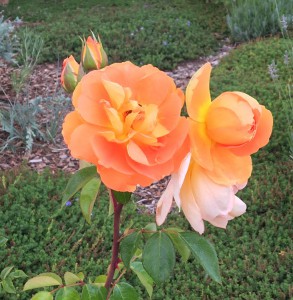July 2018
 By Scott Canning, Director of Horticulture
By Scott Canning, Director of Horticulture
Want to know what to accomplish in your garden in July? Here’s two words: water and weed. Think of it this way: weeds steal water and nutrients from your garden plants, so weeding is perhaps the number one chore this month. Get in the groove; weeding can be contemplative. It can be very satisfying to work for a time and see a healthier, cleaner garden behind you. I am a life-long gardener, and weeding is something that is a part of what I do: Get the right tools and a low bench or cushion, and weeding becomes meditation, not a chore.
As for the tools you might want, there are two that are my “go to” implements to keep my garden clean: The first is an “asparagus knife”, a tool equally well-suited to cutting asparagus spears below the soil level and destroying weeds with the same cut. A “garden knife” is equally handy. It has a strong handle and a blade that has a serrated edge on one side to “slice and kill” your weeds at ground level, or can be used to pry the roots up like an asparagus knife. I love them both.
Top up mulch wherever you work. Mulch is indispensable; it suppresses weeds, cools the root zone, and helps maintain precious moisture in the soil. I like an organic product like a compost or composted mulch; these contribute to the organic activity of your soil as they decompose. For certain “xeric” gardens, an inorganic, gravel mulch is appropriate: this will maintain soil moisture more than you can imagine, and most xeric plants will seed themselves into fine gravel more successfully than into garden soil or an organic mulch. You will get plants to use and share.
In the vegetable garden, after weeding, the mantra is “harvest and sow”. Harvesting frequently is critical, since a small squash on a Monday will be a monster zucchini by Friday. Small, young, tender vegetables are the joy of a home garden; you must be in the garden often to reap the best produce. And keep sowing seeds to keep your vegetable garden young and productive. At the end of July, and through August, sow seed frequently in small rows.

‘Pat Austin’ rose (photo by Joan Grabel)
Last call for feeding and pruning roses, and feeding in general, with the exception of annuals—they can be fed through September. Pruning or feeding roses and other shrubs after July contributes to lush, late growth that is unable to “harden” before winter comes, which kills the tender growth. Even dead-heading roses should end now.
Weed and harvest in the cool mornings. Then retreat to the shade with a glass of iced tea and enjoy the fruits of your labor.


